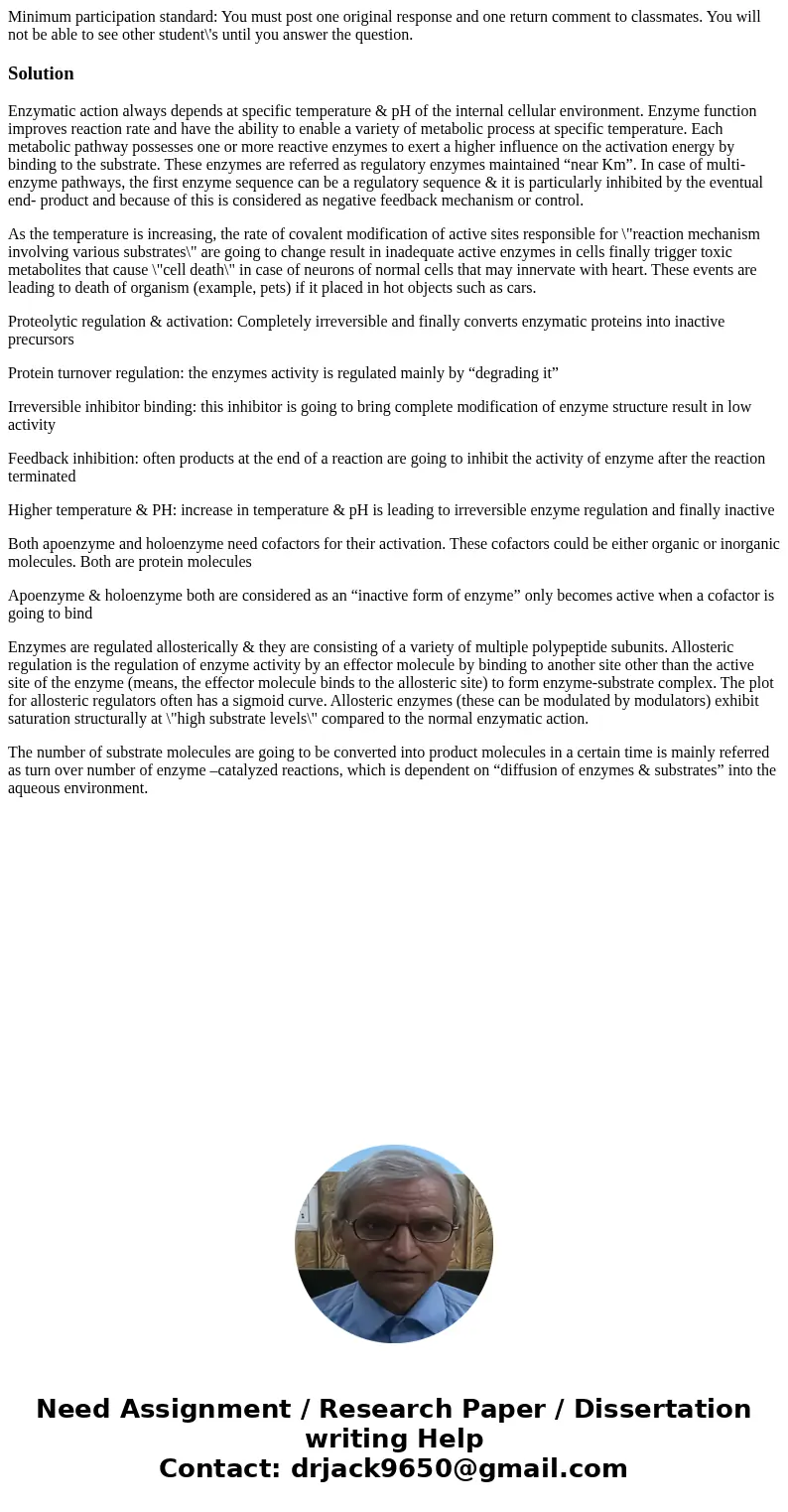Minimum participation standard You must post one original re
Solution
Enzymatic action always depends at specific temperature & pH of the internal cellular environment. Enzyme function improves reaction rate and have the ability to enable a variety of metabolic process at specific temperature. Each metabolic pathway possesses one or more reactive enzymes to exert a higher influence on the activation energy by binding to the substrate. These enzymes are referred as regulatory enzymes maintained “near Km”. In case of multi- enzyme pathways, the first enzyme sequence can be a regulatory sequence & it is particularly inhibited by the eventual end- product and because of this is considered as negative feedback mechanism or control.
As the temperature is increasing, the rate of covalent modification of active sites responsible for \"reaction mechanism involving various substrates\" are going to change result in inadequate active enzymes in cells finally trigger toxic metabolites that cause \"cell death\" in case of neurons of normal cells that may innervate with heart. These events are leading to death of organism (example, pets) if it placed in hot objects such as cars.
Proteolytic regulation & activation: Completely irreversible and finally converts enzymatic proteins into inactive precursors
Protein turnover regulation: the enzymes activity is regulated mainly by “degrading it”
Irreversible inhibitor binding: this inhibitor is going to bring complete modification of enzyme structure result in low activity
Feedback inhibition: often products at the end of a reaction are going to inhibit the activity of enzyme after the reaction terminated
Higher temperature & PH: increase in temperature & pH is leading to irreversible enzyme regulation and finally inactive
Both apoenzyme and holoenzyme need cofactors for their activation. These cofactors could be either organic or inorganic molecules. Both are protein molecules
Apoenzyme & holoenzyme both are considered as an “inactive form of enzyme” only becomes active when a cofactor is going to bind
Enzymes are regulated allosterically & they are consisting of a variety of multiple polypeptide subunits. Allosteric regulation is the regulation of enzyme activity by an effector molecule by binding to another site other than the active site of the enzyme (means, the effector molecule binds to the allosteric site) to form enzyme-substrate complex. The plot for allosteric regulators often has a sigmoid curve. Allosteric enzymes (these can be modulated by modulators) exhibit saturation structurally at \"high substrate levels\" compared to the normal enzymatic action.
The number of substrate molecules are going to be converted into product molecules in a certain time is mainly referred as turn over number of enzyme –catalyzed reactions, which is dependent on “diffusion of enzymes & substrates” into the aqueous environment.

 Homework Sourse
Homework Sourse